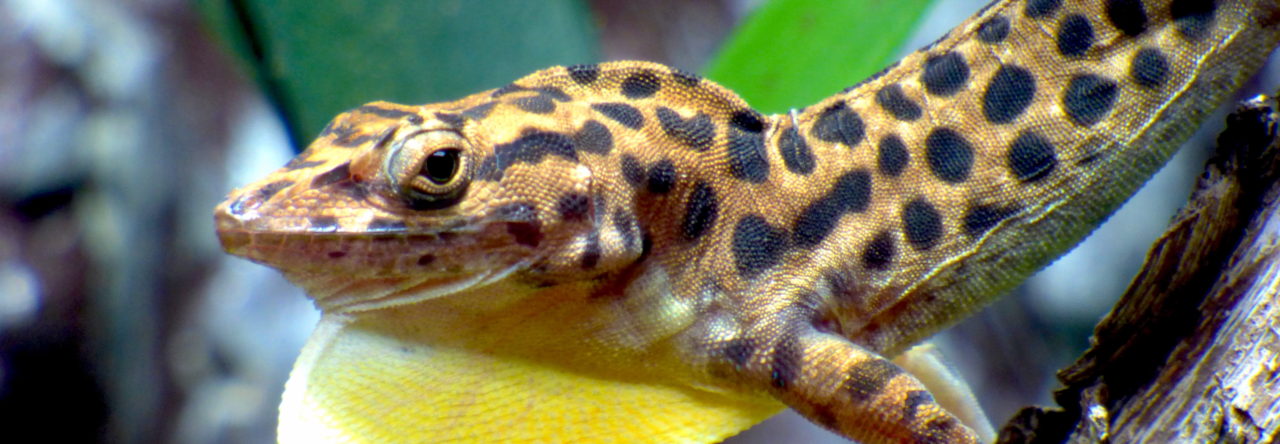When I think of colour and pattern in lizards, I tend to think about showy visual displays. An example that springs to mind is this fantastic footage of Draco lizards using multiple appendages as colourful signals.
But despite all the effort an individual lizard puts into signalling to conspecifics, it must constantly remain wary of predators. Mimicry and camouflage are tried and tested means by which to evade predation, but little effort has been made to quantify the colours and patterns that may help lizards escape being eaten. Research presented by Danielle Klomp from the University of New South Wales at the Animal Behaviour Society 2014 meeting addresses this question in Draco cornutus, a South East Asian agamid lizard that uses the patagium, an extendable membrane attached to elongated rib bones, to glide from tree to tree.
Sampling in two populations of D. cornutus, Klomp noticed that though individuals in the two populations had identical dewlaps, they differed substantially in the colour and pattern of the patagium. Remarkably, the colours exhibited in each population seemed to perfectly match the colour of falling leaves of trees in the same habitat.
By measuring spectral reflectances as well as the proportions of black on lizard patagia, falling leaves, foliage, and dead leaves, and accounting for how these colours might appear to predatory birds, Klomp demonstrated that in both colour and pattern, D. cornutus patagia in each population most closely matched falling leaves in the same population. This suggests that Draco are especially vulnerable to predation while gliding, and have undergone strong natural selection to mimic non-prey items in the particular environment they experience while gliding.
Here’s a link to Klomp’s poster from the International Society for Behavioural Ecology 2014 conference, and here’s a link to a blogpost about some very cool technology that Klomp used to make her poster come alive while presenting it.
- Field Assistant Needed for Anolis Research in Florida! - March 4, 2020
- Are Brown Anoles in Florida Really Driving Green Anoles to Extinction III: A Post-Irma Update - September 15, 2017
- Evolution 2017: Spatial Structuring of Urban Green Anoles - June 30, 2017



Skip Lazell
Nifty! Thanks Ambika – and Danielle!
Ambika Kamath
Thanks for your always-encouraging comments, Skip!
Rick Stanley
Very cool! Thanks for sharing.